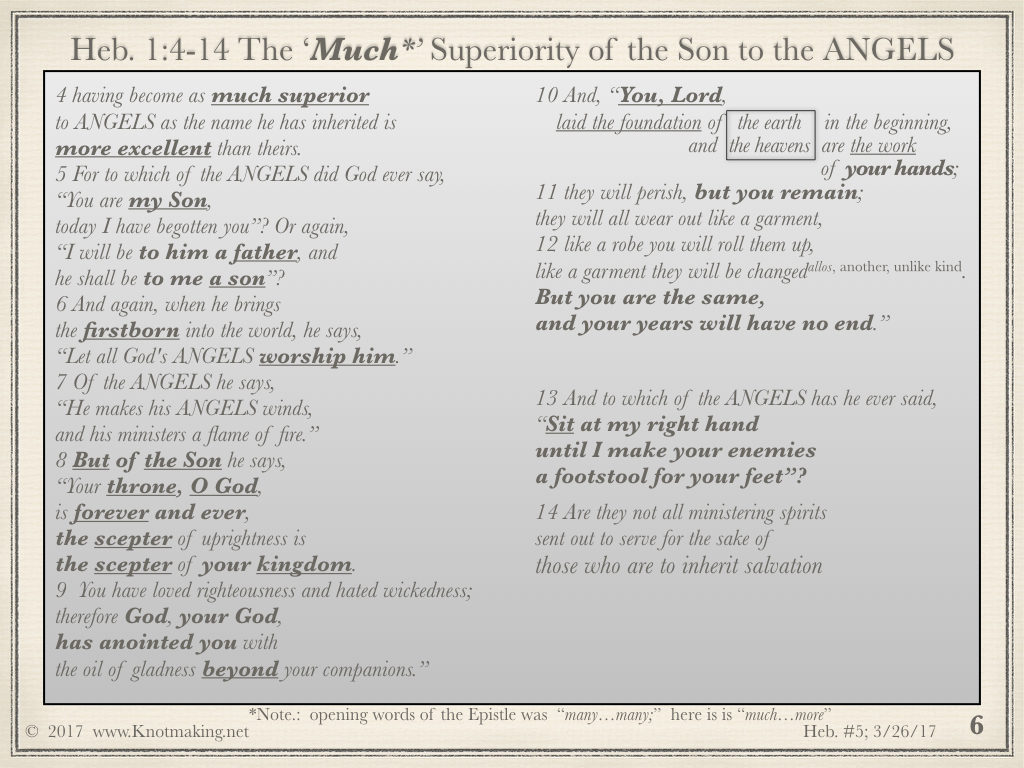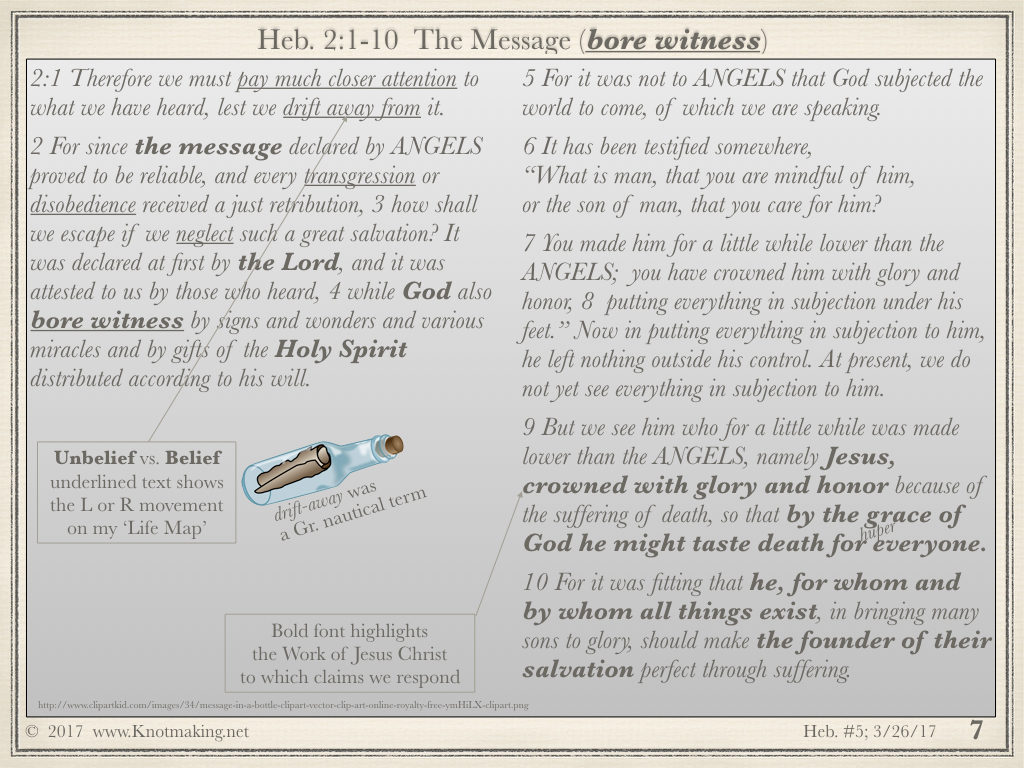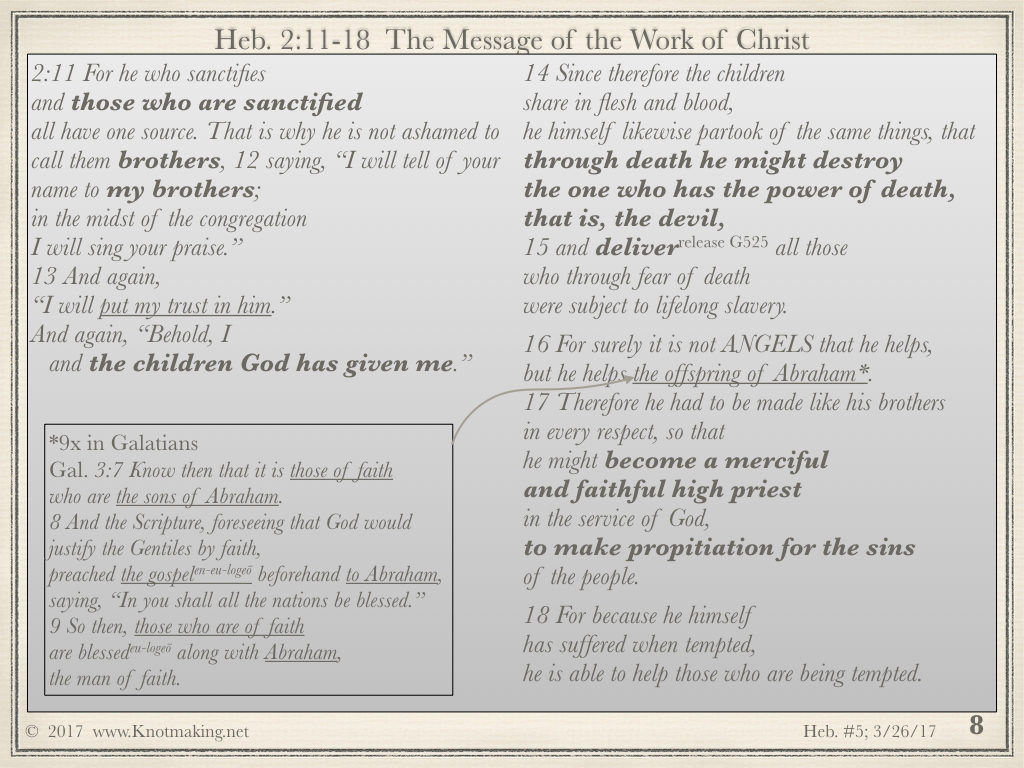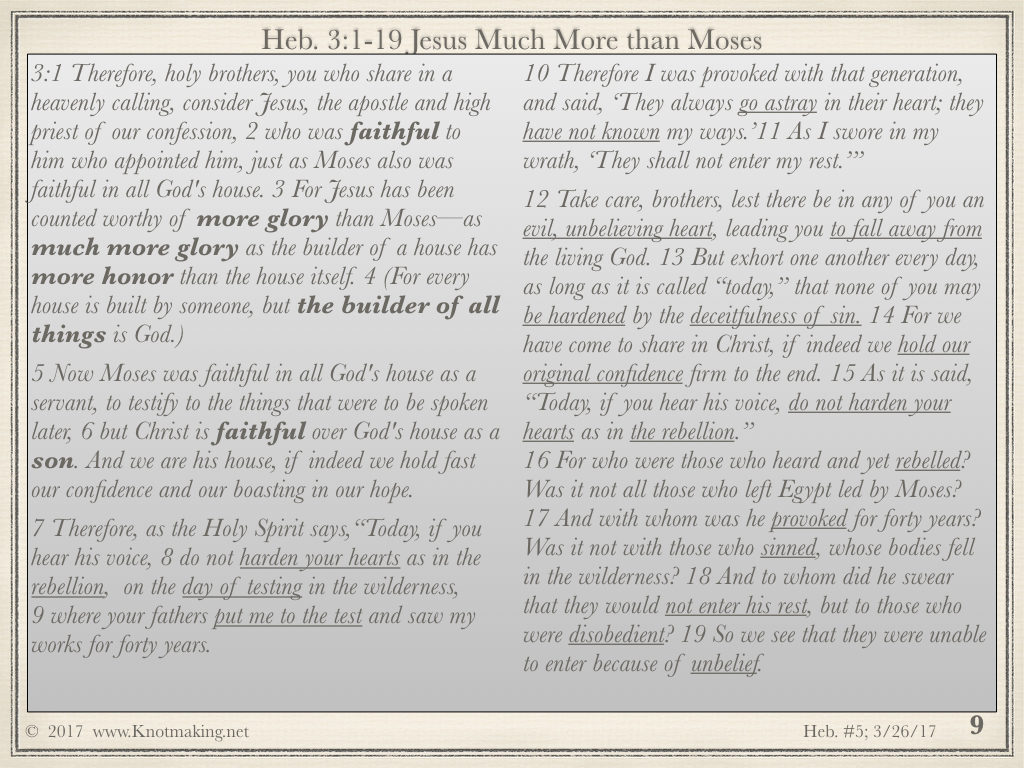Hebrews Study #5
Hebrews Ch. 2 and 3 My ‘Life Map’
On Chart 1 below is our weekly reminder:
We are, by the exhortation of the Holy Spirit (The Paraclete, The One Call Aside us), to lift up the Lord Jesus Christ, the Great Shepherd of the sheep (namely, us).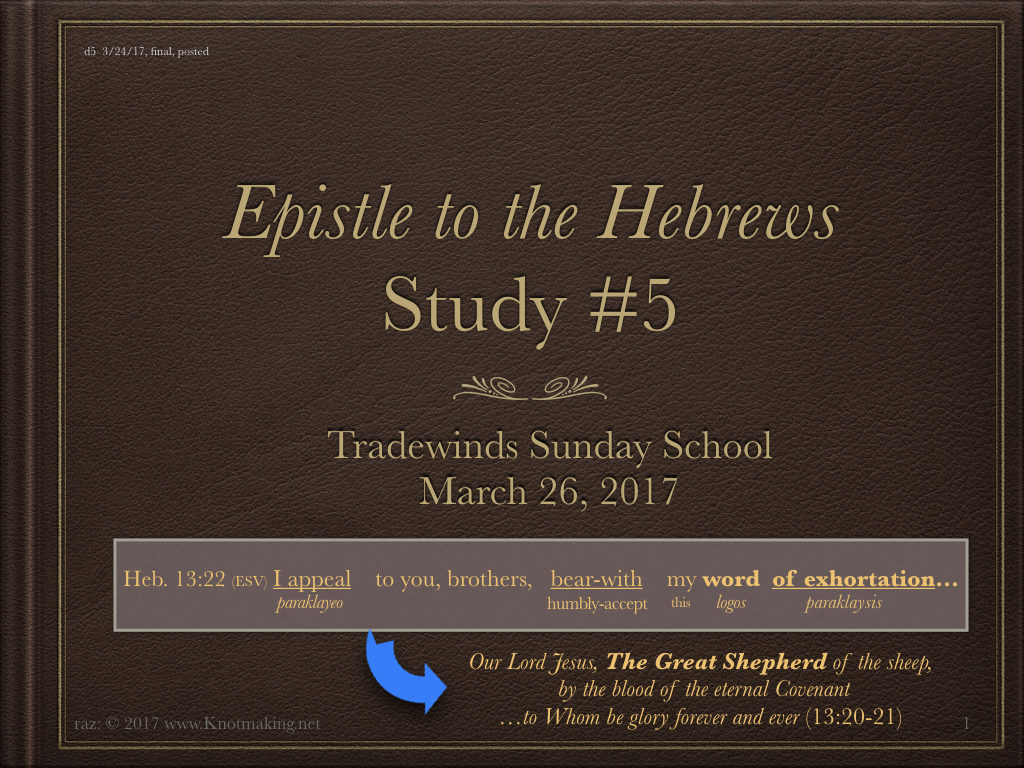
Hebrews 1:1-4 establishes many great and foundational truths of the Epistle and the Gospel itself. Heb. 1:3 contains one of the important words in all of the New Testament, defining Christ in terms of God (The Father) translated as “essence” or “nature.” The Gr. word is hypostasis as given shown below, in the text below the blue box headlined by “Exact Imprint.” This word (hypostasis) defines for us Jesus’s very Being, namely that He is both truly God and truly man.
Two external resources on the subject of the hypostatic union are here and here:
In the box on the left below is from early in the Gospel of Luke when Jesus attended the synagogue in his ‘home’ city of Nazareth. In the open phrase below, He claims that the Spirit of the LORD is upon His earthly being. (Recall that LORD is the translation of the Gr. kyrios, which in turn translates the Heb. name of God, YHWH or Jehovah). The significance of this is apparent by Jesus’s claim that the 700 year old prophecy Messianic of Isaiah is fulfilled in their hearing, a truly astonishing moment.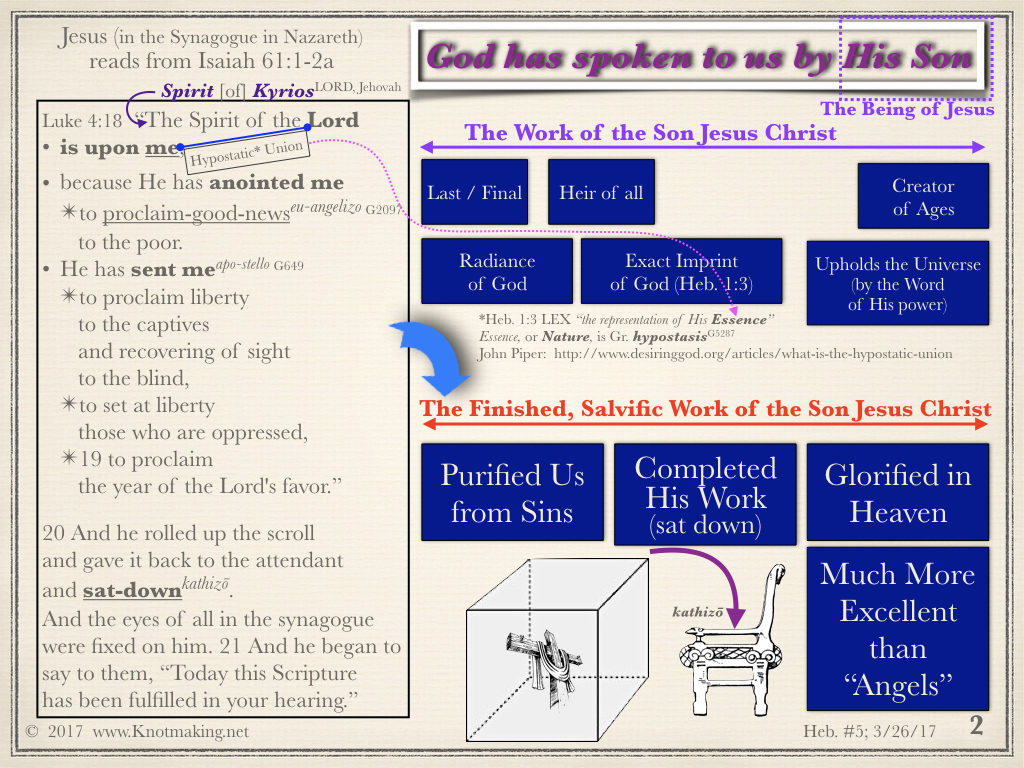
“Angelos” means “messenger,” and does not specifically reference the being of such messenger. The central importance of “Angelos” or the Heb. equivalent (“Malak”) is the message itself. The danger is that we are drawn to the being of the various messengers God used and in certain ways is still using to communicate His Word. In the passage below from 1 Cor. 1 we see the root problem of many problems in the Corinthian church, namely messenger-following. In 2 Cor. 11 we learn that Satan himself uses messengers (again Gr. angelos) as frauds of light to lead astray.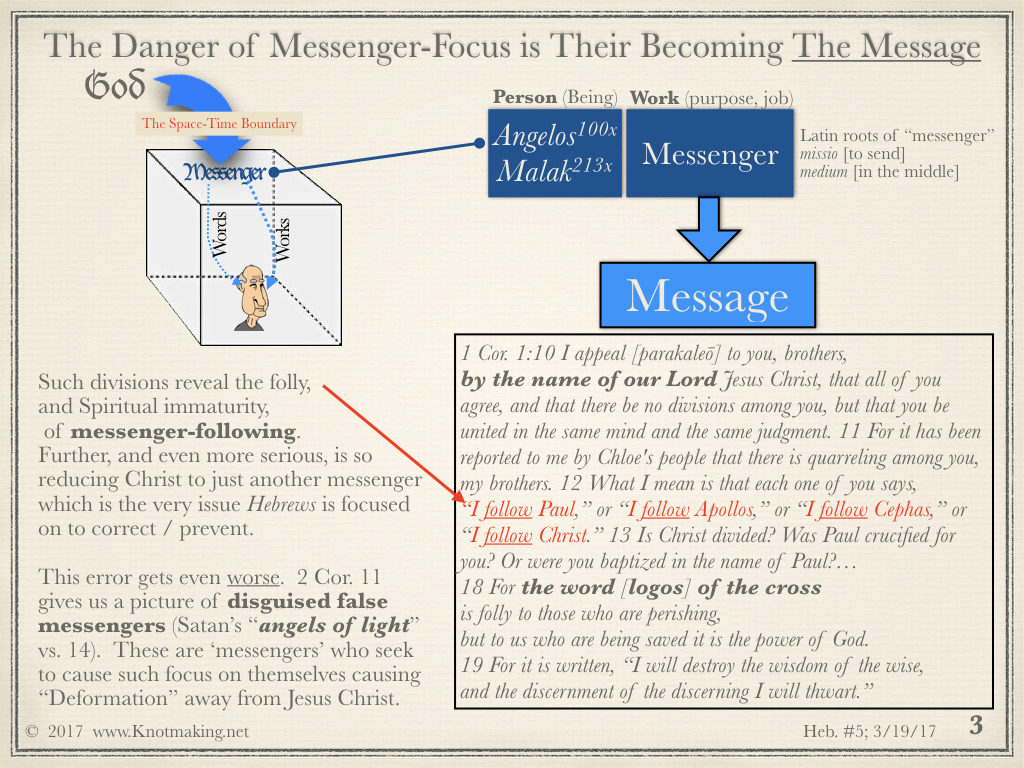
A list of the various beings God has used as recorded in the Bible is given in the dark shaded box. The object of their message was and is the Person and Work of the Son, Jesus Christ who Himself carried the message of His Work, namely the Gospel. The very Gr. word for “gospel” is significant: it is eu-angelion, where “eu” is a prefix meaning “good” (as eulogy means “good words” in the context of funeral speech) and “angelion” means the message itself. So “the Gospel” does not mean “really true” as it is customarily taken, though of course it is true; it means “good news.”
What is that Good News? It is that the Son, Christ, has come in faithful fulfillment of the Law in our place. On this point, what was and is “the message” of “The Law?” Hint: think of synonyms for “doomed.”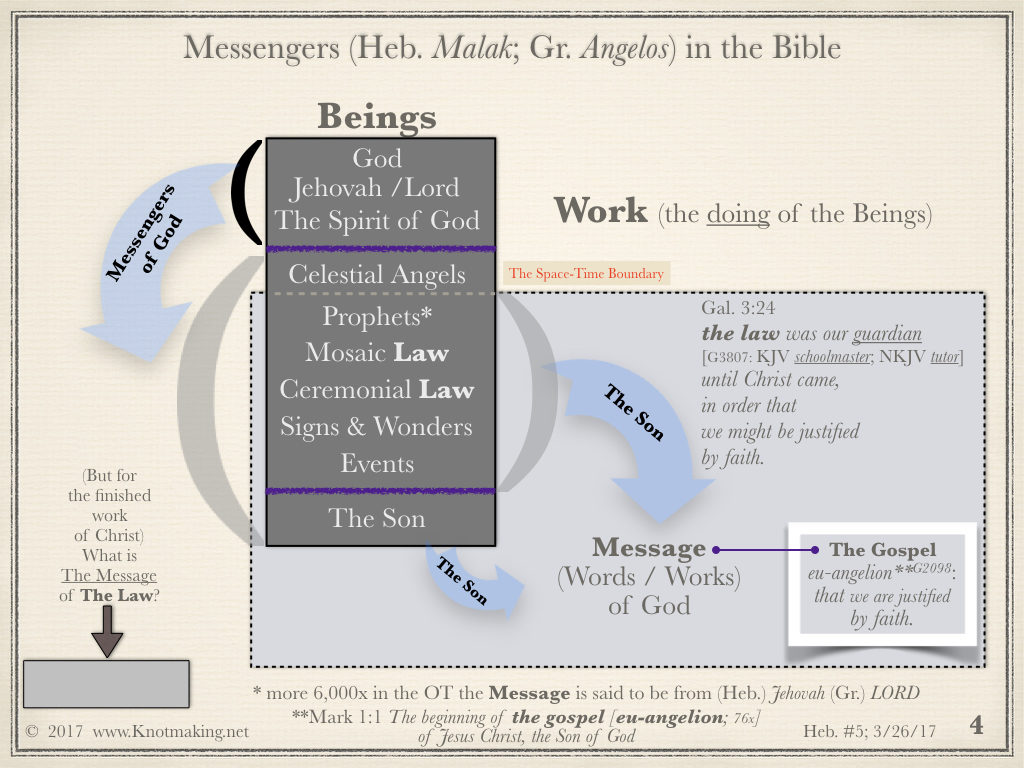
As we have considered in our prior studies, when we are confronted with the Word of God we respond in one of three ways: Defy (I don’t care what the Word says, as I do not attend to what any ancient writing may claim about my life), Deny (I do care about the Word but refuse to accept what it says in some particulars), or Humbly Accept.
How I respond to God’s Word becomes the foundation of my ‘Life Map.’ Those three reaction-paths determine the arc of my inner life in the eyes of God.
At the bottom of the below chart are three OT texts that teach us something important about the idea of foundation. The Heb. word is “haw-RAS” which means broken down and related ideas as shown in the text at the bottom right below. The three OT passages highlighted as Ps. 11:3, Prov. 24:31 and 14:1. We will return to the significance of a right and secure foundation in Chart 11 below.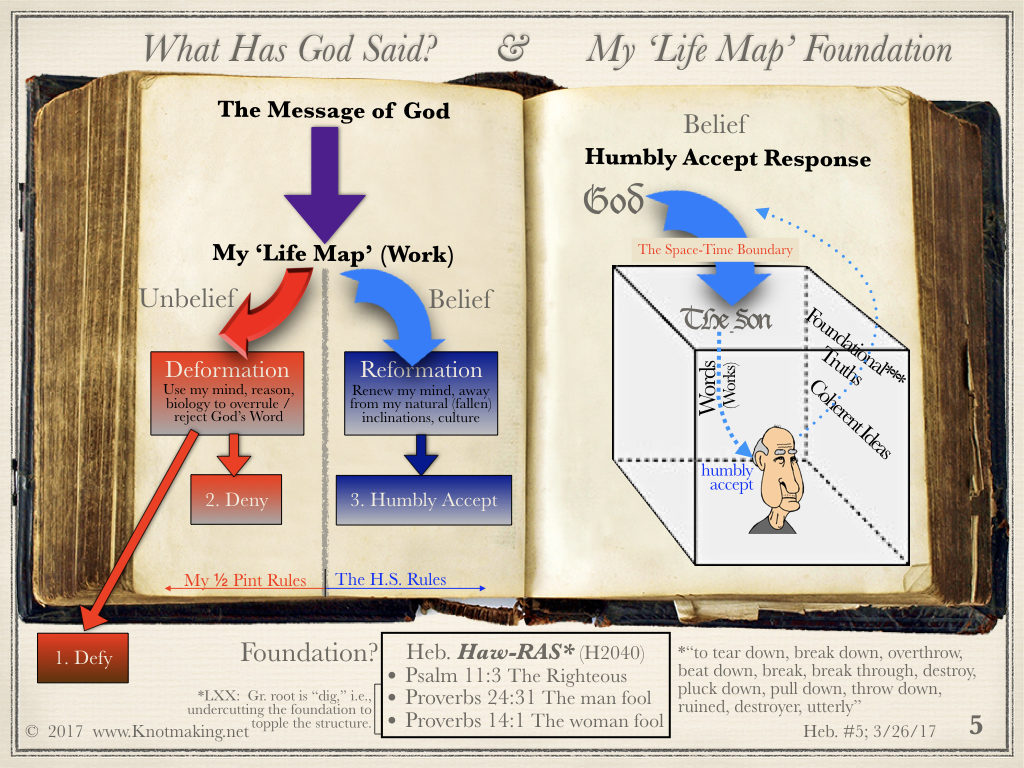
The charts below continue our study in the Epistle through Chapter 3. Note: there is an error in the below chart (#6) regarding the word “changed” in verse 12. The added annotation gives the correct Greek word translated “changed,” namely the Gr. root “allos,” but the description of “allos” provided is simply incorrect. Allos does not mean “another, unlike kind” as that is what “heteros” means. So just ignore that additional phrase added onto to “allos.”
The underlined text of the previous charts highlighted the choices made contrary to “Humbly Accept” (either toward Deny or Defy). We should note that in just the few chapters above the text gave us at least 20 specific phrases showing man’s natural rebellion against the submission to God’s Word.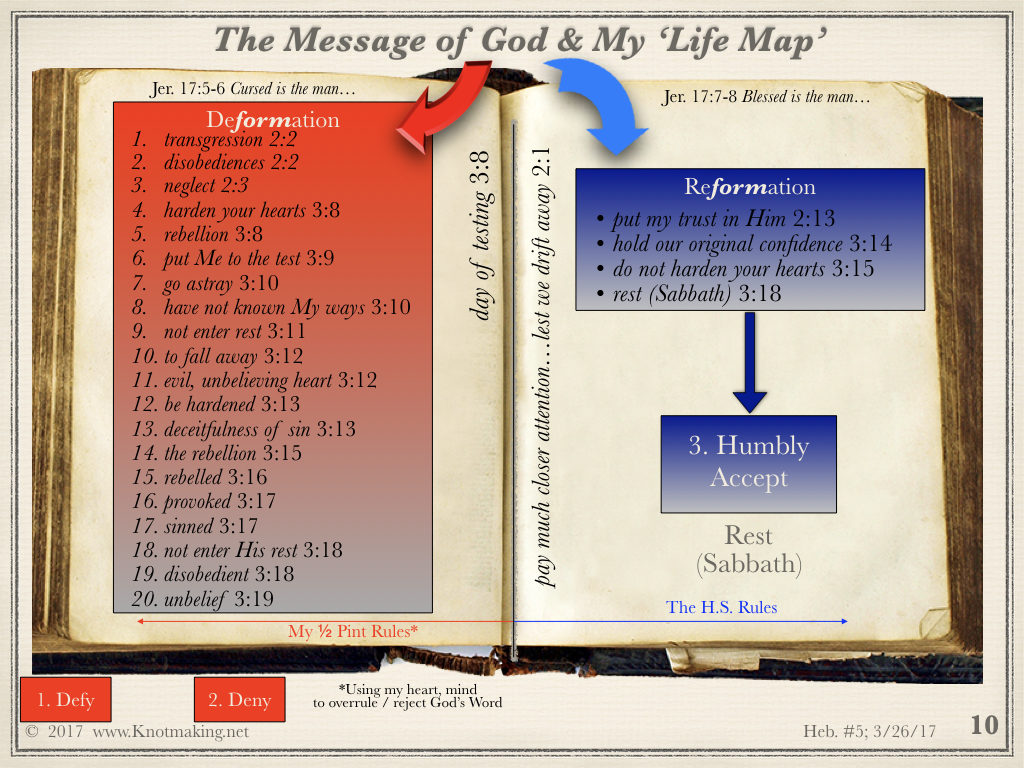
Shown in the image at the top right is the aftermath of an apartment building which literally toppled over after completion but just prior to occupancy. As seen there is a nearby river and there had been substantial rains softening all the ground. The builder had failed to construct the foundation with pilings sufficient to secure the structure to something solid deep below ground. The dramatic text from Jer. 17 contrasts the cursed state of someone who has turned away from God’s word (to Deny or Defy) with the blessed state of one who trusts in the Lord.
The argument often advanced for a person’s choice to turn away from God’s Word, either to Deny or Defy, is some nonsense about “I have to follow my heart,” as those the reasoning or biology of a fallen being, even if it’s me, is a reliable navigator to an issue as important as life. As the Jer. text makes clear, our “heart” is a deceitful navigator and narrator guiding and interpreting life.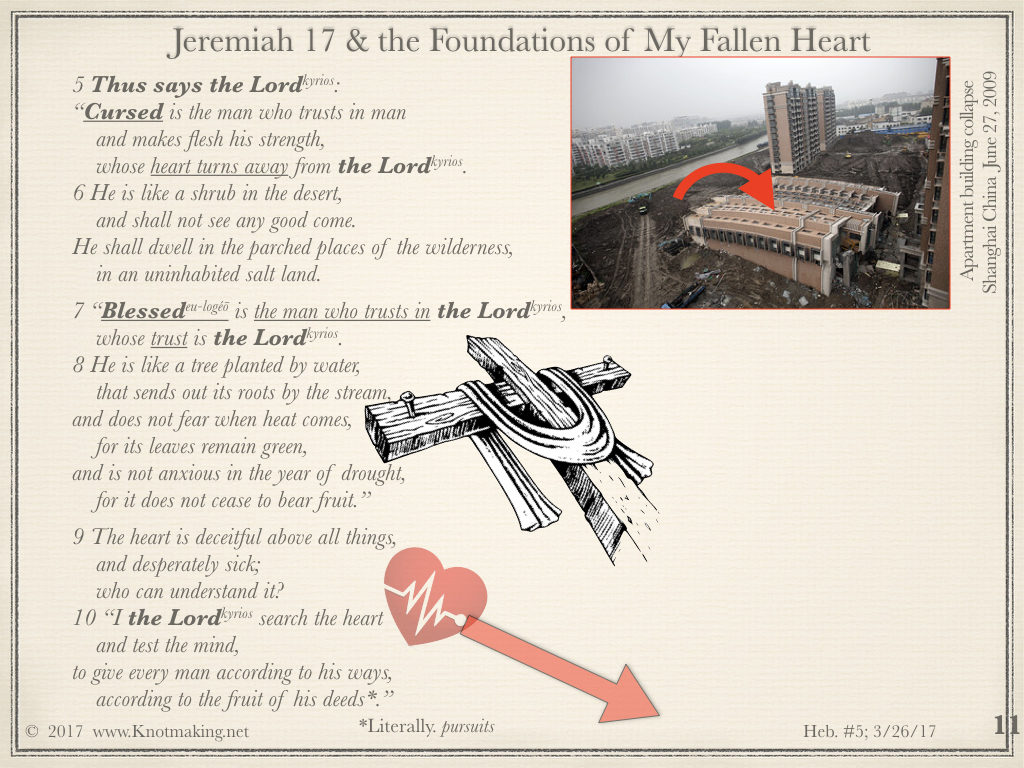
How should we deal with these serious life choices we are compelled to make? Scripture makes clear it is God-pleasing to be on the right side of the page, in the below illustration, humbly accepting God’s Word.
Shown below are three pieces of counsel of how to stay and return to the right hand side of the a ‘Life Map’ book, and three available resources (tools). First (1) the Fear of the Lord (FOTL) should help us gravitate always to the right side, as water flows to the sea. Second (2) when we do find ourselves on the left (wrong) side of the map, we can recognize we’ve made a wrong turn, because in one way or another, something known only to us and deeply within, we recognize we are where we don’t below, as David expressed in Ps. 42. The answer is turn around, get our directions not from our innermost reasoning and return ‘home.’ Third (3), when confronted with the many external and internal voices to ‘go left’ on some issue, we can, and need to, just say “No!” in faith.
Three great resources for us are of course Scripture itself, and the fellowship of fellow Believers with whom we can entrust our inner warfares, and to be in prayer continually (1 Thes. 5:17ff).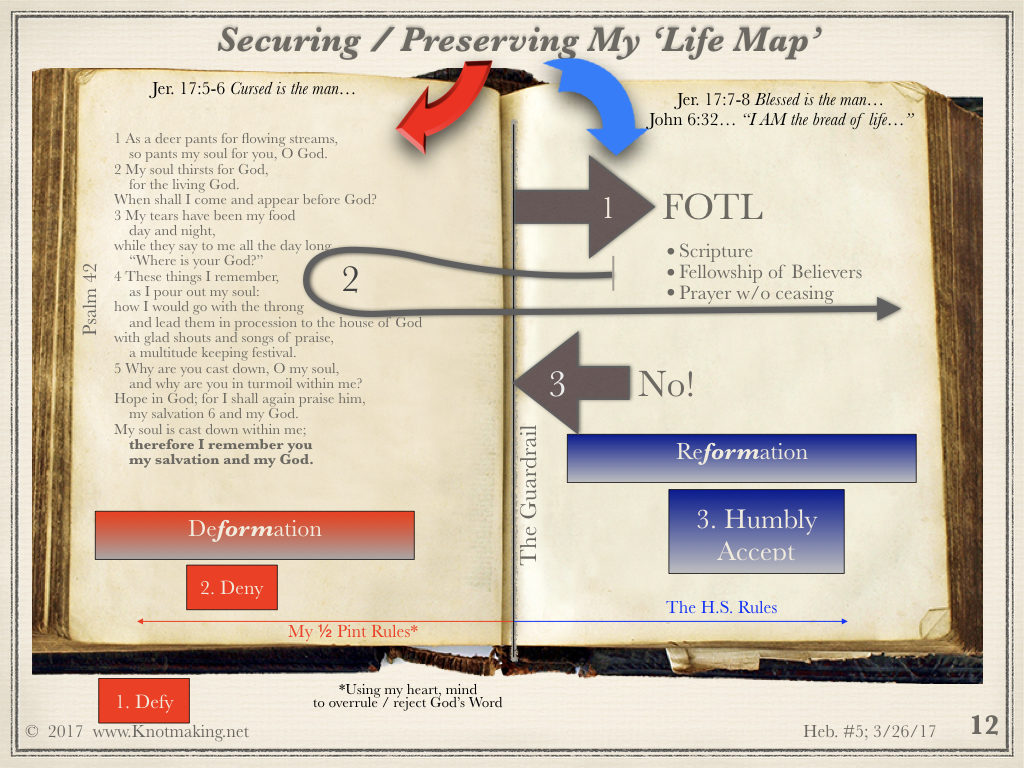
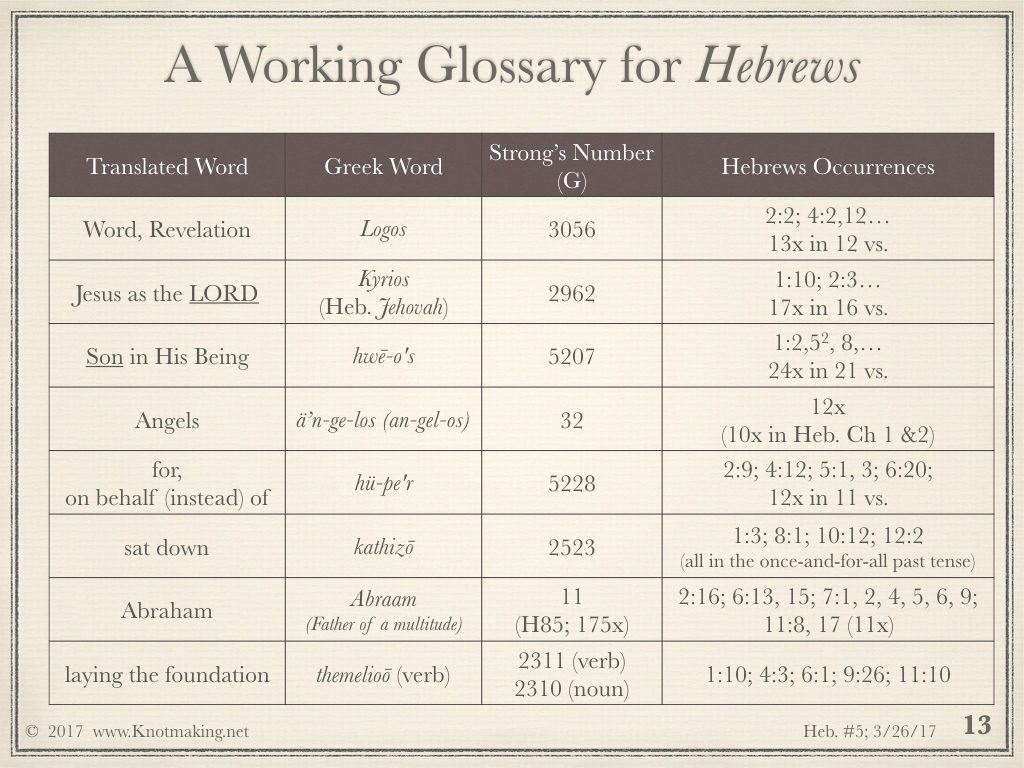
Hebrews Study #6 is here
